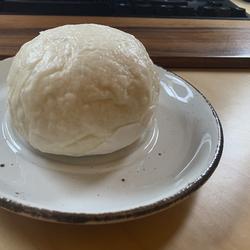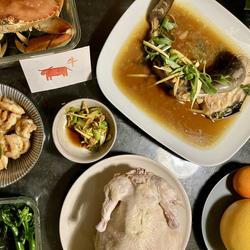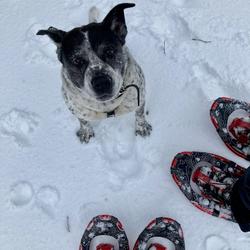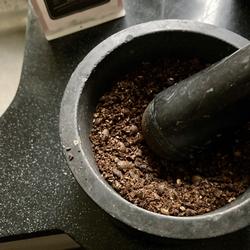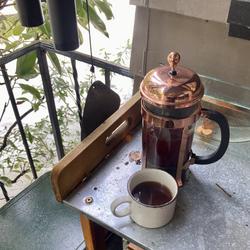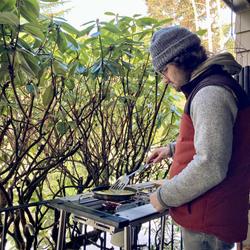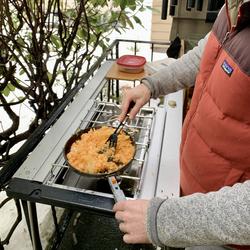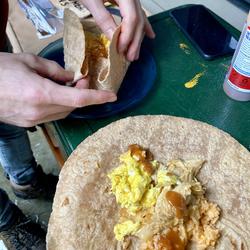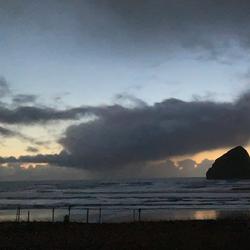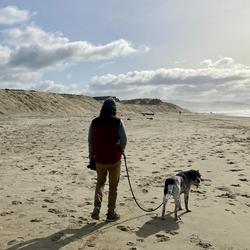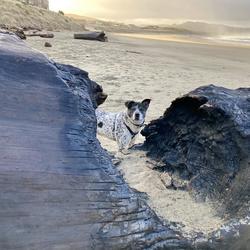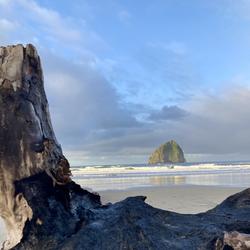Lunar New Year & the Oregon Coast
Introduction
The prior weekend was filled with a number of holidays. On Friday we welcomed the Year of Ox with Lunar New Year, Sunday was Valentines Day, and Monday was President’s Day in America.
Of these holidays, Lunar New Year is the only one of major importance to my partner and I. Valentines Day is a good excuse to make or eat a very nice meal and President’s Day is merely a public holiday that is part of America’s civic religion, which means a free day off to some workers.
Despite there being a number of holidays we planned to celebrate in various ways, it was also a weekend of serendipity, as a result of the winter storm that passed through Portland. What began as a long weekened filled with holidays ended with us taking an impromptu trip to the coast.
Lunar New Year
Lunar New Year is the beginning of the calendar year that is based on based on the cycles of the moon. With its orientation towards cycles of the moon it differs from the Gregorian calendar that is now more commonly used internationally. If anything, counting time by the moon is more accurrate to how we did so historically, and also has a deeper connection to the natural world.
Lunar New Year has significance in our family because my partner is Chinese American. Her family grew up celebrating the holiday every year, and as we became a couple I was included in those traditions as well. For me its become a fun way to mark a new year, and is an important part of our shared traditions as an intercultural couple.
Since moving to Portland we’ve alternated between traveling to Los Angeles to celebrate with her family and celebrating up here with friends and coworkers. This year was quite different because we were unable to celebrate with anyone in-person due to the ongoing COVID-19 pandemic. Last year we traveled to Los Angeles to celebrate right before the pandemic became apparent.
There are various activities associated with Lunar New Year, but one the most important parts for my partner is the foods we eat. The morning of Lunar New Year we eat a vegetarian meal to give the animals a break. In the evening we eat a bigger meal that typically includes crab, fish, and pork.
The storm
Beginning on Friday we received a lot of snow in Portland and the northwest Oregon as a result of a winter storm. We typically only get a signficant amount of snow in the city once or twice a year. Having lived the entirety of my life prior to moving to Oregon in southern California, I’ve looked forward to any major innundation of snow. Having four full seasons is still a novelty to me.
However, seven years in I’ve also grown to appreciate how poorly the city and its people collectively are able to deal with the impact of snow. Snowstorms often lead to a number of cars being stuck on or abandoned on the roadside, minor car accidents, and trees falling and hitting powerlines.
By Saturday morning we had enough snow to allow us to go snowshoeing around the neighborhood with our dog Sophie. We visted the nearby city park and found a large group of families from the neighorhood sledding down the hillside and having a great time. This was a fun sight to see in the midst of the pandemic and winter, when it is typically overcast and rainy.
Sophie is a big fan of the snow, and had a fun time exploring and walking around our neightborhood.
The aftermath
Unfortunately, by Sunday night the weather had evolved into freezing rain. Freezing rain is more common occurrence in Oregon during the winter months, and when paired with snow can lead to some disastorous effects. These effects primarily have an impact in weighing down trees to the point where they fall over or split in half due to the added weight of the snow & ice on their limbs.
The culmination of snow and ice over the weekend led to exactly that, toppling numerous trees around the region, which subsequently took down nearby powerlines, which led to a series of power outages in the region that left more than 150,000 people, including ourselves, without power for a number of days. This occurred at the same time as the much more severe weather and power outages effecting Texas.
Power outage
Our power went out on Sunday evening, and did not end up coming back on until midday Tuesday. Our neighbors across the street in Southwest Portland draw power from a different aerial than ours, and were without power for a few days prior to the ice storm that eventually did the city in. Both myself and my partner were aware of coworkers and friends-of-friends who were without power for much longer.
With the power being out, things started to become quite cold, and the food in our refrigerator started to warm up and our freezer started to defrost. Fortunately, we have a fireplace in our home that we were able to use to keep ourselves warm at night, and a good collection of camping gear that we were able to use to put to good use. On Monday morning we woke up still without power, so we decided to take out some of our gear to make coffee and breakfast on our front porch.
Out to the coast
By Monday night both of our mobile phones stopped working, and by Tuesday morning needing to get back to work, and still not having power or reliable internet access, we decided to take a cue from our neighbor and head out of Portland to the Oregon Coast. We decided to head out to Cape Kiwanda, a favourite destination of ours.
The route to Cape Kiwanda
We traveled via Oregon Route 26, Oregon Route 6, and U.S. Route 101 to reach Cape Kiwanda. This route takes you from the Willamette Valley, where Portland is located, across the Northern Oregon Coast Range of mountains to the coast, and through Tillamook State Forest & city of Tillamook. The trip typically takes us between 1 1/2 to 2 hours to complete.
As we travelled along the highway we were able to clearly see the devastation the storm had also wreaked in the Tillamook State Forest. From the highway you could see that numerous trees had fallen down, large limbs had cracked, and some trees had split in two. This seemed to have mostly impacted the Alder (Alnus rubra) trees that grow alongside the fir trees in the forest.
As we crossed through the coastal range, it was clear that some parts of the highway were starting to slide out, though not bad enough to make drivng dangerous at the time.
Once we were out of the coastal range, the mountains opened up to the Tillamook valley, and we continued southward to Cape Kiwanda & Pacific City.
Cape Kiwanda
We arrived at Cape Kiwanda around midday and checked-in with the inn. We were scheduled for work that day, so we spent most of the next two days working from our room at the inn. We punctuated our days with some walks out to the beach, and ended up returning home on Thursday.
Reflections
As a result of our experience over this weekend, and the impromtu roadtrip that it concluded with, I realized a few things about our present situation of living and working entirely at home for nearly a year. The first is the value of novelty, and the second is our dependence upon electricity.
This travelouge originally contained more content on these two reflections, however I decided to split them out into separate entries. I’m currently expanding upon those sections in some new posts.
